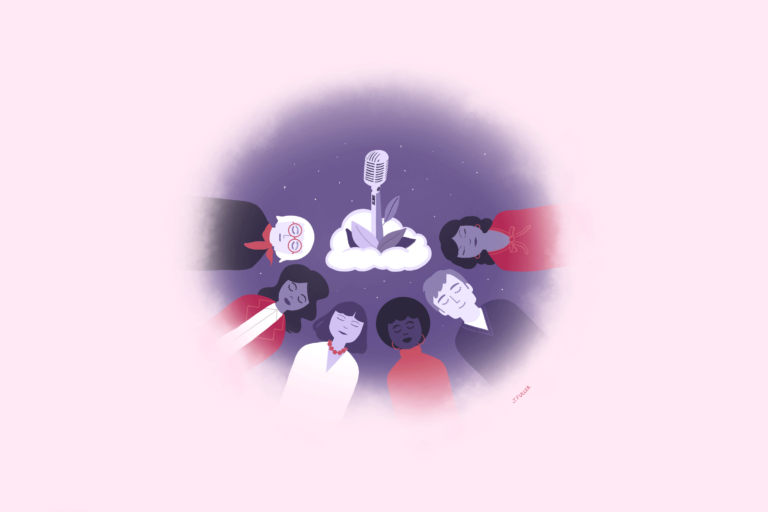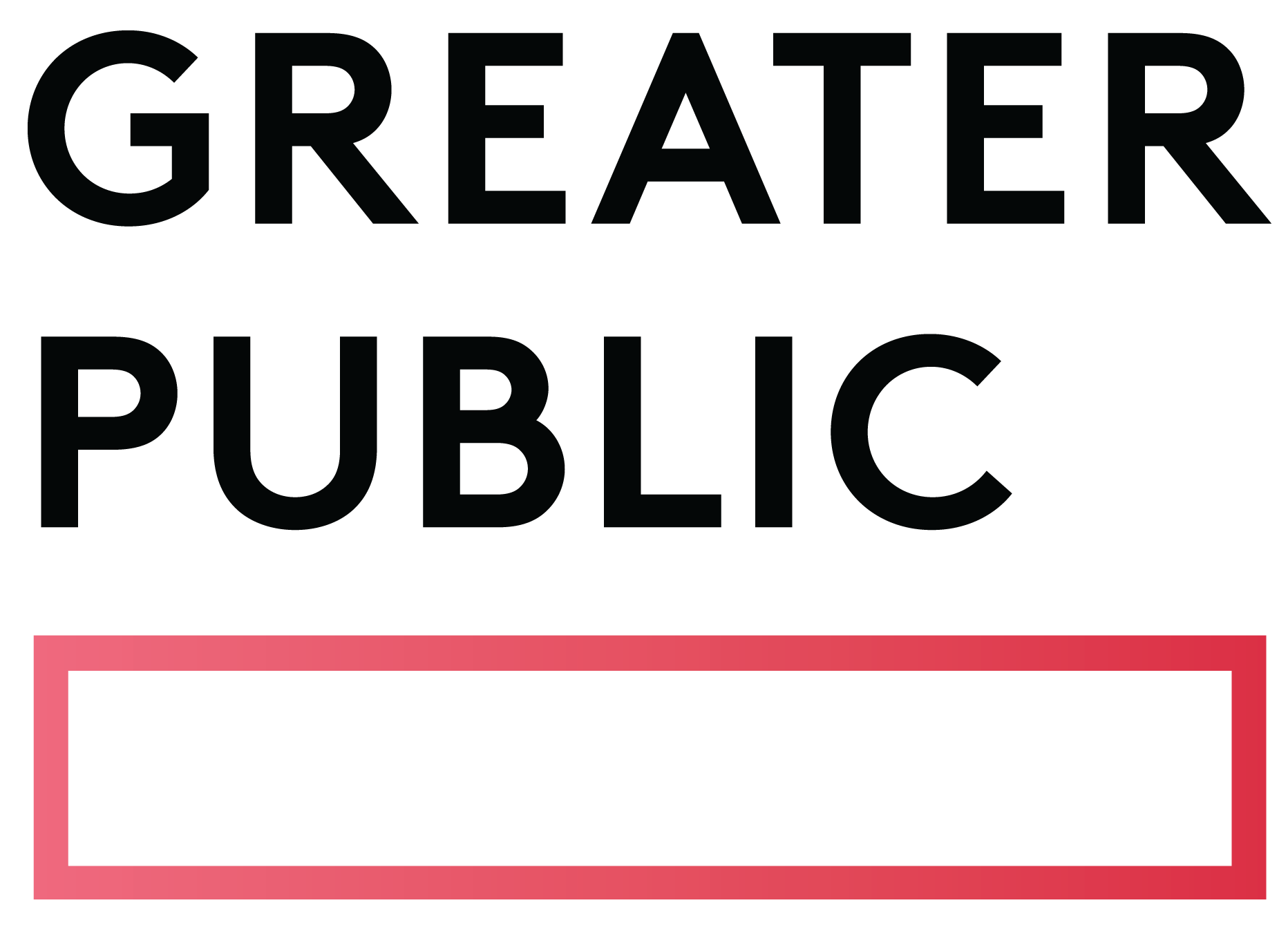Related Articles
Subscribe to the Greater Public newsletter to stay updated.
This site is protected by reCAPTCHA and the Google Privacy Policy and Terms of Service apply.

One of my favorite things about working in this industry is talking to people from stations around the country about their work, hearing new ideas, and debating the state of things. As someone who’s often had concerns about the trajectory of public media, I’ve taken comfort in hearing colleagues who I respect talk about work that excites them: a podcast launch, a new fundraising technique, a concert series, a successful capital campaign, a creative collaboration, and more. However lately, the bright spots feel more rare. I hear fatigue and frustration in people’s voices, even when they’re talking about big projects that are the main focus of their work. I don’t know anyone who thinks public media is fine right now.
That weariness is warranted, because nearly every aspect of our business model is facing systemic downturns. With the exception of PBS Passport, new member acquisition is down across the system, and acutely enough at some stations to cause shrinking member files, despite impressive retention numbers. This is part of a broader nonprofit trend of declining donor numbers, down 10% in 2022, but also the first decline in total donation dollars since 2012. These downward trends in philanthropy in the United States may be related to declining trust in institutions, which includes record low trust in mass media, though local news has retained more confidence. Meanwhile, despite an early domination of the podcast space, our entire industry is still trying to figure out how to grow and monetize digital audiences. Disruptions in digital advertising and the rise of A.I. seems to be heralding the end of Web 2.0, the era dominated by user-generated content and social media, before we ever really got good at it.
The convergence of these multiple factors signals that public media is at an inflection point. This means the consequences from the accumulated factors can be greater than with one or two trends alone. But the potential for innovation is greater too. In order for public media to emerge from this inflection point, we must be honest with ourselves about what led us here, and leverage this moment to nimbly pivot in a new direction. This is an opportunity to better fulfill our public service mission and truly serve everyone. In doing so, we have the opportunity to secure a more sustainable future for public media.
Earlier this year, while we collectively grappled with the ‘end of Web 2.0’, and many felt big tech was facing its own inflection point, a former Google executive published a piece in which he defined what he felt to be the core failures of his former employer. The failures he identified read as very familiar to those of public media, in particular two of them: delusions of exceptionalism and mismanagement.
For decades public media had limited competition. Every community had a set number of radio and TV broadcasts that could legally reach them, and there was a clear relationship between national entities like NPR and PBS and their member stations. Content produced or distributed nationally could only be accessed via stations, which allowed them to gate-keep local access. In this environment, we were able to create exceptional audio storytelling, news reporting, playlists of independent artists, documentaries, and children’s programs that revolutionized the media landscape. Over time, developments like cable, media consolidation, the internet, podcasting, and on-demand streaming have eroded our competitive advantage. But, since we’ve simultaneously retained a core audience of highly educated, predominantly white supporters who reinforce our delusions of exceptionalism, we haven’t had to engage in the painful process of asking ourselves if what we’re doing is – exceptionally – serving our communities.
From 2011 to 2022 public media employment has remained fairly flat, fluctuating between 18,077 and 19,226 employees. We’re an industry in which people jokingly call themselves “public media lifers,” and it’s generally understood that many people stay at their station, if not their specific job, for decades. That means that the labor force is, or is at least is perceived to be, static. Many managers have been at their stations for years with little to no training. They were promoted to leadership based on traditional values of being good at their field of work at the time, but that doesn’t mean that they developed skills to manage people.
On top of that we’ve historically underinvested in employee training and performance management programs and there’s rarely accountability or support for managers to maintain cutting-edge skills. Stations that have mandated annual reviews, like a lot of university licensees, often treat them as bureaucratic paperwork rather than an opportunity to support an employee’s professional growth and receive actionable feedback as a manager. Many stations have no training budget outside of conference attendance for a few key executives, or training budgets that go unspent, because employees didn’t have any extra mental bandwidth or time to engage in training. When employees are not receiving effective management, are not being heard when they surface innovative ideas, and don’t see open positions into which they can advance, they leave. People are what make public media possible, and yet we are not prioritizing investment in our most important resource.
There are two things we can do to address our industry’s delusions of exceptionalism and mismanagement.
Earlier this year, The Roadmap for Local News advocated that the future shouldn’t be saving legacy media organizations that failed to truly serve the community, but rather strengthening “civic media,” which “seeks not simply to ‘inform’ or ‘entertain,’ but to equip people with the information they need to make the places they live better: civic information.” This concept of civic media is similar to service journalism and solutions journalism, which seek to empower people to solve problems in their community. Recent audience research demonstrates that this is what people, particularly those in more diverse communities, want from news media. Another survey of different communities that had lost most of their local news outlets found that the communities wanted more service journalism; they wanted newsrooms to engage more in Facebook groups and to give people a community calendar. Additionally, research from the American Journalism Project (AJP) found that people want “information they can act on;” for “news to meet them where they are;” and for “newsrooms to play a role in connecting and convening communities.” Public media needs to go beyond serving a tiny fraction of “high-information” news consumers, and meaningfully reach the many communities we aim to serve.
This can feel particularly daunting in a highly polarized environment, which is why we must prioritize a different set of journalistic skills. Amanda Ripley, a veteran investigative journalist, has written and spoken about how our country is currently in a state of “high conflict,” and that getting comfortable with good conflict will allow us to better serve our communities. She has transformed her reporting to “get people to be curious about things that they’re not curious about but maybe should be.” One way she does this is to listen for the most important thing to the person being interviewed, then she’s humble enough to repeat the thing back to them and ask, “is that right?” This is the kind of listening, humility, vulnerability and openness to good conflict that we need to cultivate in our journalists, programmers and content creators if we want to truly understand and serve everyone in this country.
There is a growing body of research that shows that toxic cultures in workplaces lead to high rates of employee turnover and subsequent profit loss, and that, conversely, when employees feel respected, they are easier to retain and are more productive. One of the top reasons that people quit any job in 2021 is because they felt disrespected at work, and public media is part of that trend. That means we need to get better at listening, humility and vulnerability in our workplaces, and managers should take the lead.
Good managers proactively tend to a diverse set of employee needs, from physical to emotional and environmental. This requires a complex social-emotional skill set that should be valued in supervisors as much, if not more, than experience with the day-to-day tasks performed by the people they manage. While some lucky few may be naturally inclined to be a good manager, all will benefit from training and some will require it. That’s why successful organizations continuously invest in and prioritize staff training. According to the 2022 Training Industry report, companies spent, on average, a little more than $1,000 per employee on training for the past two years. That means a public media station with 20 employees should have an annual training budget of $20,000, not to mention a plan to follow up with funding and systems of accountability to ensure that the changes from the training actually stick.
Working through this kind of systematic change and getting better at empathy is laborious, but it is intellectual and emotional effort that’s required to do our jobs better. So, we must recognize that this kind of labor should be counted as some reasonable percentage of an employee’s job responsibilities. For example, perhaps 5%, 10% or even 20% of an employee’s time should be spent on learning, emotional growth, and empathy depending on their type of job and where they’re at in their professional development. Also, this kind of work is exhausting, and requires recovery time for thinking, dreaming, and even resting for it to be sustainable.
If your organization is struggling with burnout, disrespect and a lack of innovation, despite everyone working overtime with a high sense of urgency, then it’s time to resist urgency culture, because when everything is on fire, nothing is on fire. When we treat everything as urgent, then it’s impossible to prioritize the things that really matter, and figure out what we can deprioritize to make space for growth.
While the bright spots have felt more rare in my conversations around the system, they are not gone. We can look to one another for successful examples of service journalism and training programs that value empathy happening at public media organizations. These solutions may feel like big lifts, especially when we’re burnt out, but the beauty of them is that they are space-making and build resilience. When we work on them collectively, they are as much the antidotes to the big systematic problems as they are the antidotes to individuals’ burnout.
While all nonprofits and news outlets are facing similar challenges, public media is particularly called to meet this moment, because serving communities with empathy and humanity is already at the heart of our mission and the best of what we do. We must remain focused and committed to sustainably evolving the best of what we do while being brave enough to stop doing the things that no longer serve us. That’s how we will overcome our complex weariness and, instead of returning to a state of being “fine,” we will thrive.
View these related member resources and more with a Greater Public membership:
This site is protected by reCAPTCHA and the Google Privacy Policy and Terms of Service apply.
New to Greater Public? Create an account.


